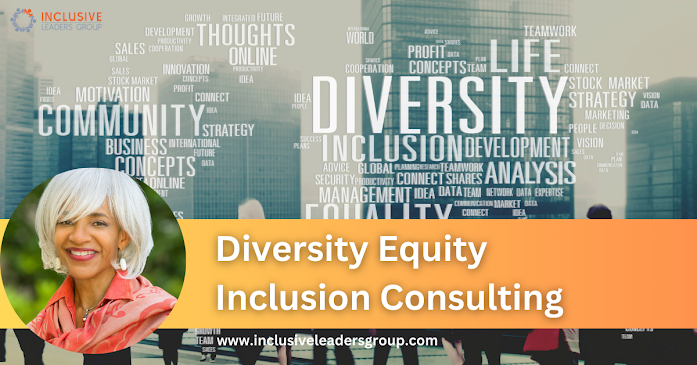The Benefits of Diversity, Equity, and Inclusion Training
Organizations are increasingly realizing the need for diversity, equality, and inclusion (DEI) in the workplace in today’s environment of rapid change. Embracing DEI improves productivity, innovation, and success overall while also fostering a sense of belonging among employees. Businesses must invest in extensive diversity equity inclusion training programs if they want to meet these objectives. This article discusses the significance of such training and its favorable effects on both individuals and businesses as a whole.
1. Understanding Diversity, Equity, and Inclusion
i. Defining Diversity
Individual differences in terms of color, ethnicity, gender, sexual orientation, age, talents, and other factors are all included in the concept of diversity. In order to foster an inclusive and vibrant atmosphere, diversity must be celebrated and acknowledged.
ii. The Essence of Equity
Equitable access to opportunities and resources for all people, regardless of their backgrounds or personal traits, is a key component of equity. It aims to get rid of institutional obstacles and prejudices that can prevent some groups from realizing their full potential.
iii. Inclusion: Creating a Welcoming Atmosphere
Making every person feel included, appreciated, and valued at work is referred to as inclusion. It goes beyond simple representation and gives people the power to completely participate in the success of the organization.

2. The Benefits of Diversity, Equity, and Inclusion Training
i. Cultivating a Positive Work Environment
DEI Training fosters a welcoming workplace where staff members feel valued and accepted, which raises job satisfaction and lowers turnover rates.
ii. Boosting Creativity and Innovation
DEI Training stimulates creativity and innovation within teams by promoting a variety of viewpoints. Different angles of view provide more thorough problem-solving and superior decision-making.
iii. Strengthening Employee Engagement
Employee engagement and commitment to their tasks are more likely when they feel included and respected. Higher performance and productivity are the results of DEI Training’s aid in developing a sense of purpose.
3. Implementing Effective Diversity, Equity, and Inclusion Training
i. Assessing Organizational Needs
Organizations must carry out extensive assessments before beginning DEI training in order to pinpoint areas that need improvement and establish clear objectives.
ii. Tailoring Training Programs
Every organization faces different problems and demands. To successfully address these particular needs, customized DEI Training programs are required.
iii. Involving Leadership
The DEI program is driven in large part by leaders. Top management being involved in the training process demonstrates a commitment to change and provides a model for others to follow.
4. Challenges and Solutions
i. Addressing Resistance
Some staff may be reluctant to implement DEI training. Overcoming this opposition can be made easier by promoting open dialogue and highlighting the advantages of variety.
ii. Mitigating Unconscious Bias
Unconscious bias can influence choices and prevent inclusivity. By assisting people in identifying and reducing these prejudices, DEI training helps promote a more equitable workplace.
iii. Measuring and Evaluating Success
Establishing key performance indicators (KPIs) will allow organizations to monitor the success of DEI training and make the appropriate corrections as needed.
Conclusion
Diversity, Equity, and Inclusion Training is essential to establishing a successful workplace. Individuals can realize their full potential and make significant contributions to the success of their organizations when diversity is valued, equity is upheld, and inclusion is promoted. In addition to boosting productivity and innovation, investing in DEI training fosters a pleasant workplace culture that draws and keeps top people.
Frequently Asked Questions (FAQs)
Is Diversity Training only for large corporations?
No of the size or industry, diversity training benefits all types of organizations. Fostering a pleasant workplace environment requires embracing diversity and inclusion.
How can I measure the success of DEI Training in my organization?
Success can be determined in a number of ways, including employee feedback, higher retention rates, higher employee engagement levels, and improved diversity measures.
Is DEI Training a one-time event or an ongoing process?
To meet new difficulties and guarantee lasting outcomes, DEI Training is an ongoing process that needs constant reinforcement.
Can DEI Training prevent all instances of bias in the workplace?
Although DEI Training can aid people in identifying and lessening their biases, it cannot totally eradicate all occurrences of bias. It does, however, lay the groundwork for promoting a more inclusive culture.
How can I get started with implementing DEI Training in my organization?
To get started, thoroughly evaluate your organization’s needs, enlist leadership, obtain professional advice as needed, and customize the training to fit your organization’s particular needs.




Comments
Post a Comment